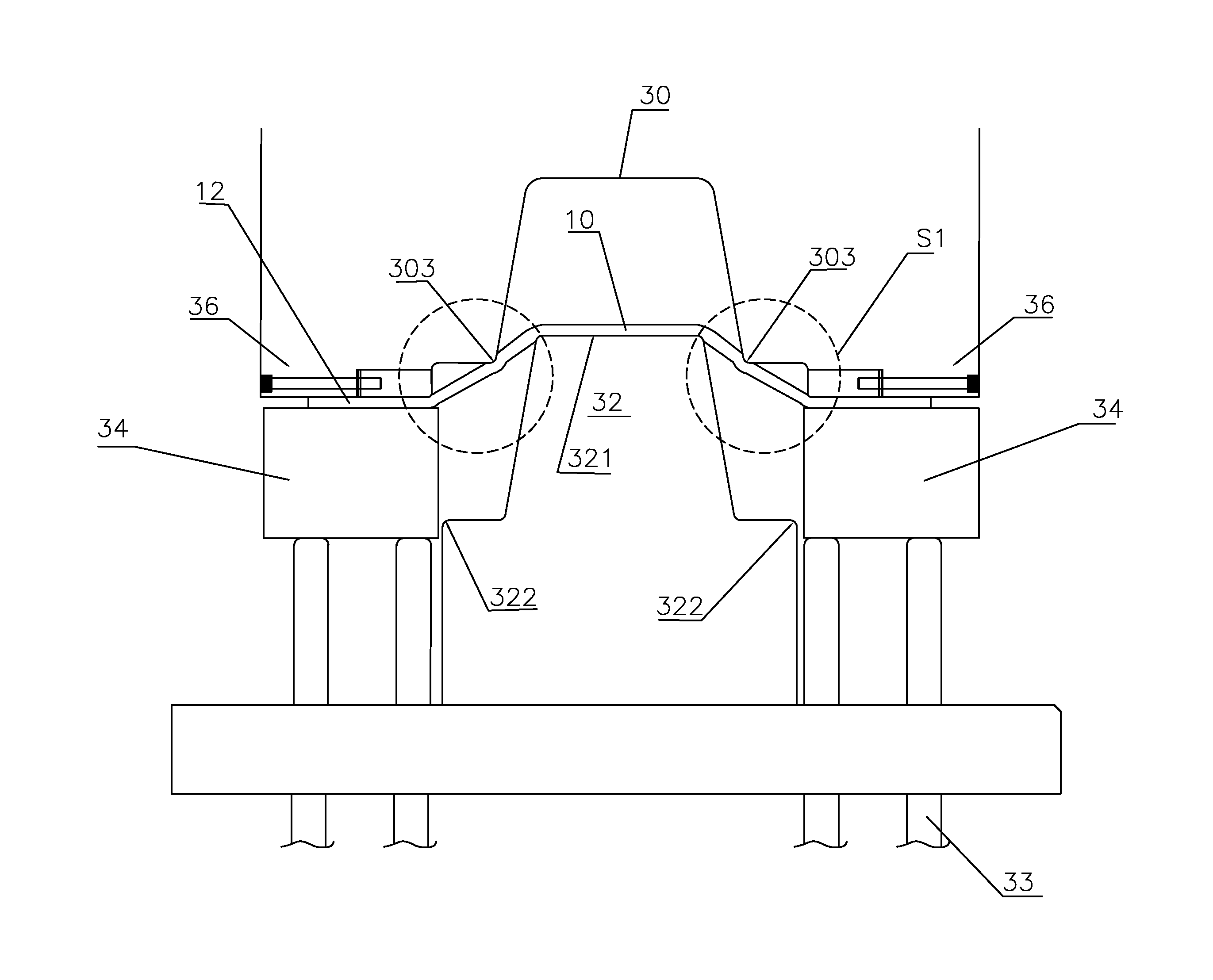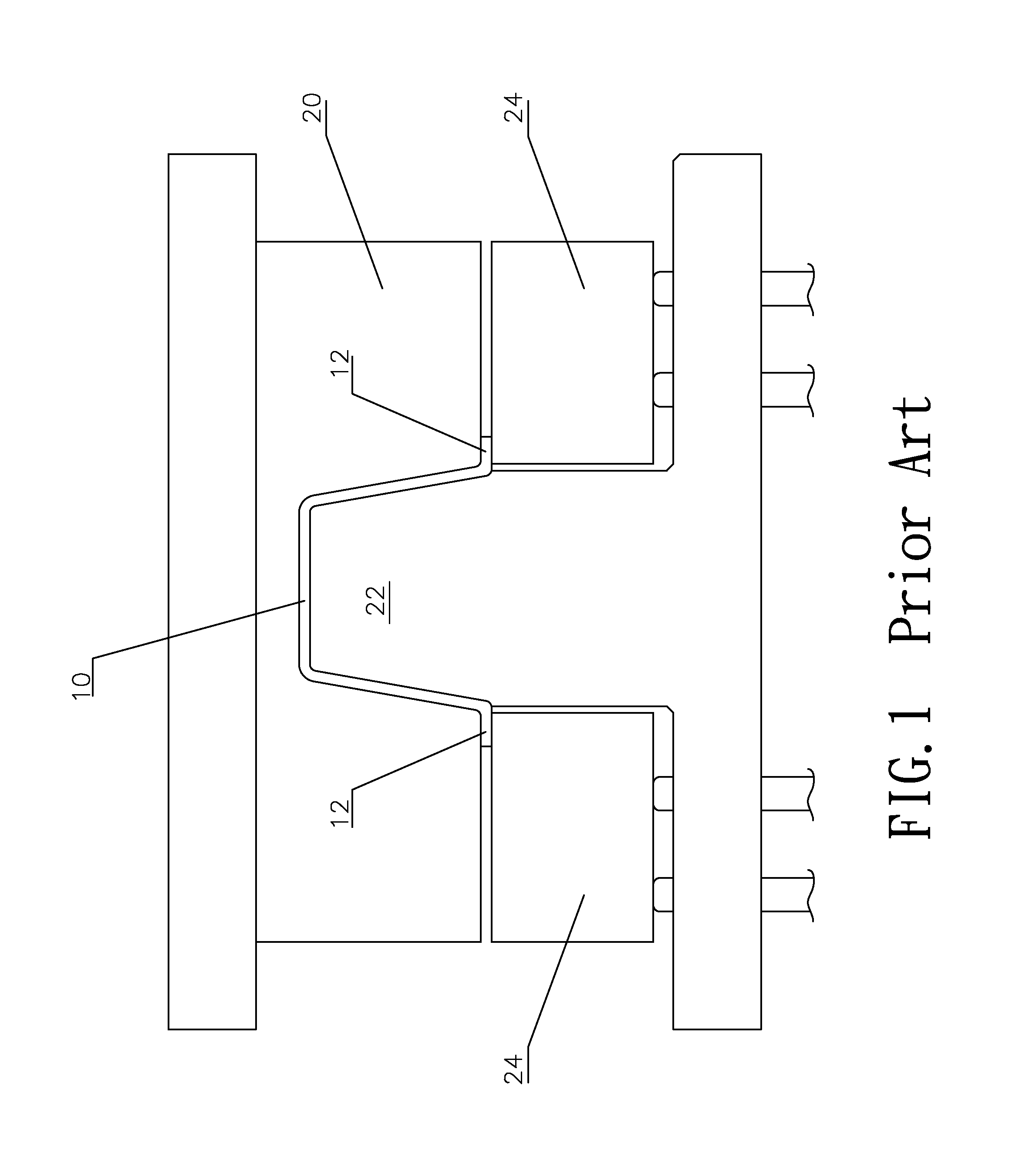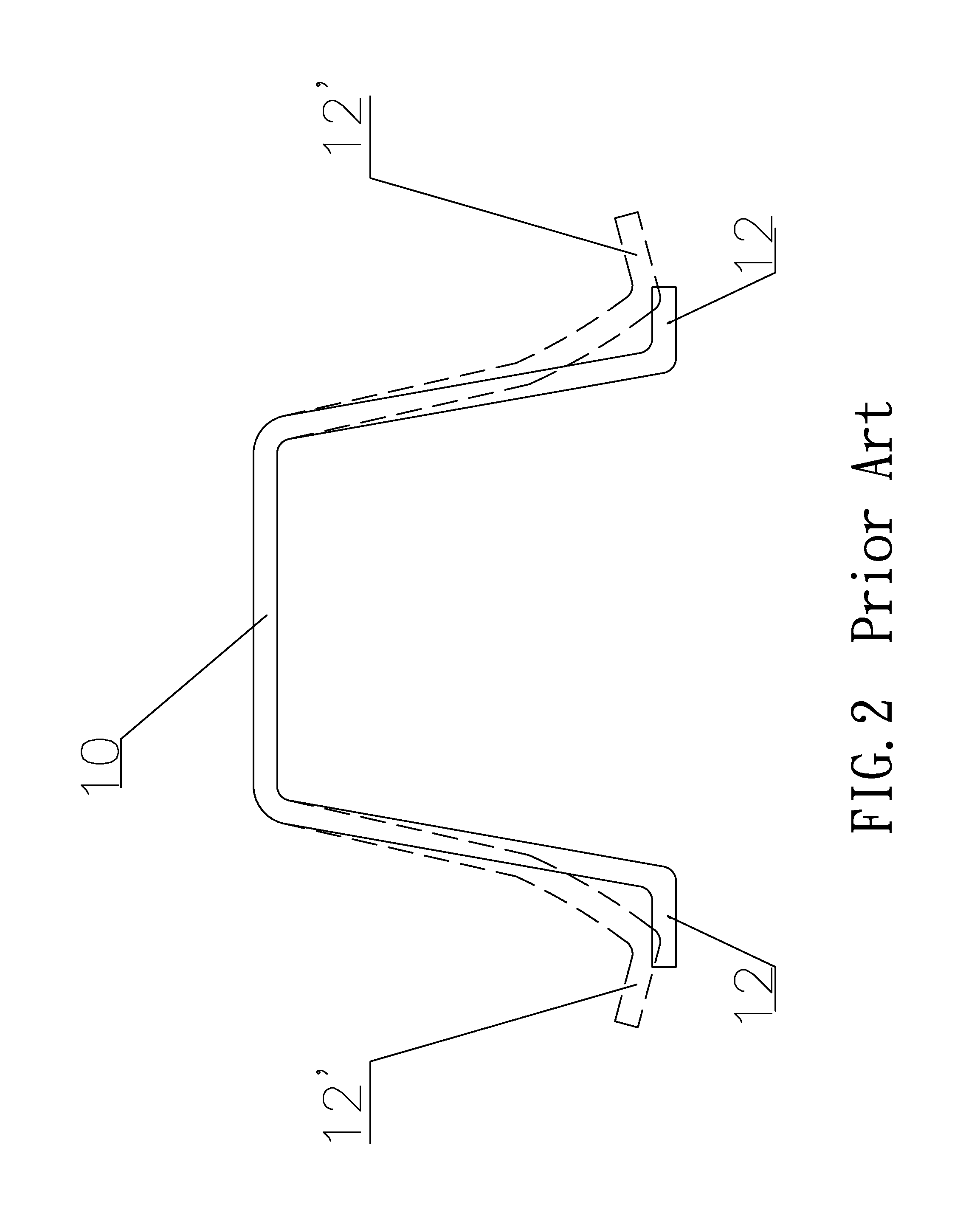Method for forming high-strength steel into a C-shape
a high-strength steel and c-shape technology, applied in the direction of metal-working feeding devices, manufacturing tools, positioning devices, etc., can solve the problems of inconvenient bending of hss sheet forming, adverse impact on hss sheet forming quality, and additional post-production
- Summary
- Abstract
- Description
- Claims
- Application Information
AI Technical Summary
Benefits of technology
Problems solved by technology
Method used
Image
Examples
Embodiment Construction
[0022]Referring to FIG. 3, the method of the invention is implemented by a power press machine includes a convex die 32, a concave die 30 and two depressors 34. The concave die 30 and the depressors 34 are moved by a first driving unit 31 and a second driving unit 33 to reciprocate upward and downward, respectively. The concave die 30 is formed with a concavity 301 and two recesses 302. And an angle 303 is formed by the concavity 301 and each the recess 302. The convex die 32 is composed of a protrusion 321 and two shoulders 322 respectively corresponding to the concavity 301 and the recesses 302 of the concave die 30 in shape and position. The depressors 34 are placed separately beside the convex die 32.
[0023]Initially, a high-strength steel (hereinafter “HSS”) 10 is placed on the protrusion 321 of the convex die 32 and under the concave die 30 as shown in FIG. 3. In more detail, the middle portion of the HSS 10 is supported by the protrusion 321 and two opposite side portions 12 o...
PUM
| Property | Measurement | Unit |
|---|---|---|
| strength | aaaaa | aaaaa |
| flexibility | aaaaa | aaaaa |
| tensile strength | aaaaa | aaaaa |
Abstract
Description
Claims
Application Information
 Login to View More
Login to View More - R&D
- Intellectual Property
- Life Sciences
- Materials
- Tech Scout
- Unparalleled Data Quality
- Higher Quality Content
- 60% Fewer Hallucinations
Browse by: Latest US Patents, China's latest patents, Technical Efficacy Thesaurus, Application Domain, Technology Topic, Popular Technical Reports.
© 2025 PatSnap. All rights reserved.Legal|Privacy policy|Modern Slavery Act Transparency Statement|Sitemap|About US| Contact US: help@patsnap.com



